13,446 people reached on Lassi with Lavina FB page – 1276 interactions – 97 Likes – 1105 post clicks (FB Analytics)
Hindu Sindhis from Pakistan Search for Freedom in India
Can there be a Happy Ending to this Partition Story?
I visited Jodhpur in 2019 and met with Hindu refugees who had fled from Pakistan….
Photos by Arun Mishra for Hinduism Today in Jodhpur
[dropcap]W[/dropcap]hen young Hindu girls go to school in the morning in Sindh, Pakistan, their parents are never sure whether they will ever see them again: two Hindu sisters in Dahrki in Sindh’s Ghotki district, both minors, were kidnapped, converted to Islam and forced into a shotgun wedding. A group of ‘influential’ men took 13-year-old Raveena and 15-year-old Reena Meghwar from their home while they were playing Holi. (link to http://www.newindianexpress.com/magazine/2019/mar/31/brides-of-despair-1956753.html )
This is a common enough occurrence in Pakistan and hundreds of young Hindu girls have vanished, to reappear with Islamic names, married to Muslim men. It is indeed the genocide of a faith. It is gut-wrenching experiences like these which have caused so many to leave home in search of spiritual freedom, security and justice for their daughters.
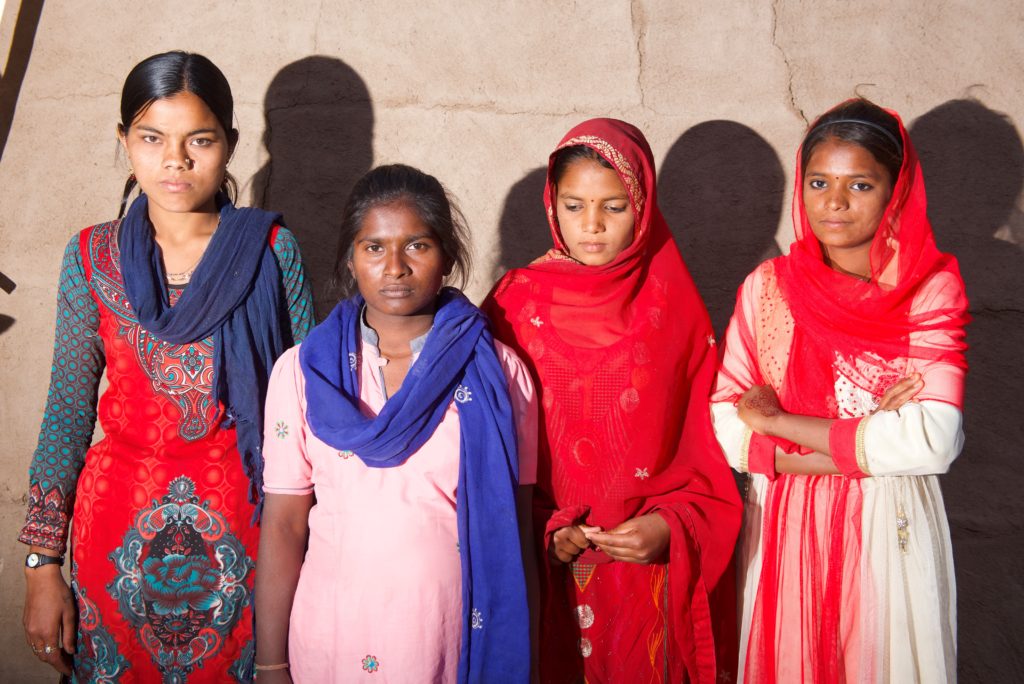
[dropcap]E[/dropcap]ven 72 years after Partition, for many Hindu Sindhi families in Pakistan the despair and uncertainty still persists – their religious freedom and their ability to embrace their spiritual culture and traditions continues to be in jeopardy. The trauma of persecution, of scarce ways to earn a living as a minority in as Islamic country, danger of their young daughters being kidnapped, raped and pushed into forced marriage and conversion to Islam persists.
For these struggling families the partition of India is not over as they still struggle in Sindh for their basic human rights, their right to pray to their God, and bring up their children in the ways of their forefathers. As Meera Bai, a Hindu migrant who fled Pakistan, told the media, “Muslims in Pakistan will never treat Hindus as their own. For them, we will always remain the ‘other’. We escaped religious and cultural persecution when we came to India. We are happy here. At least here we know that no one will steal our cattle or our daughters.”
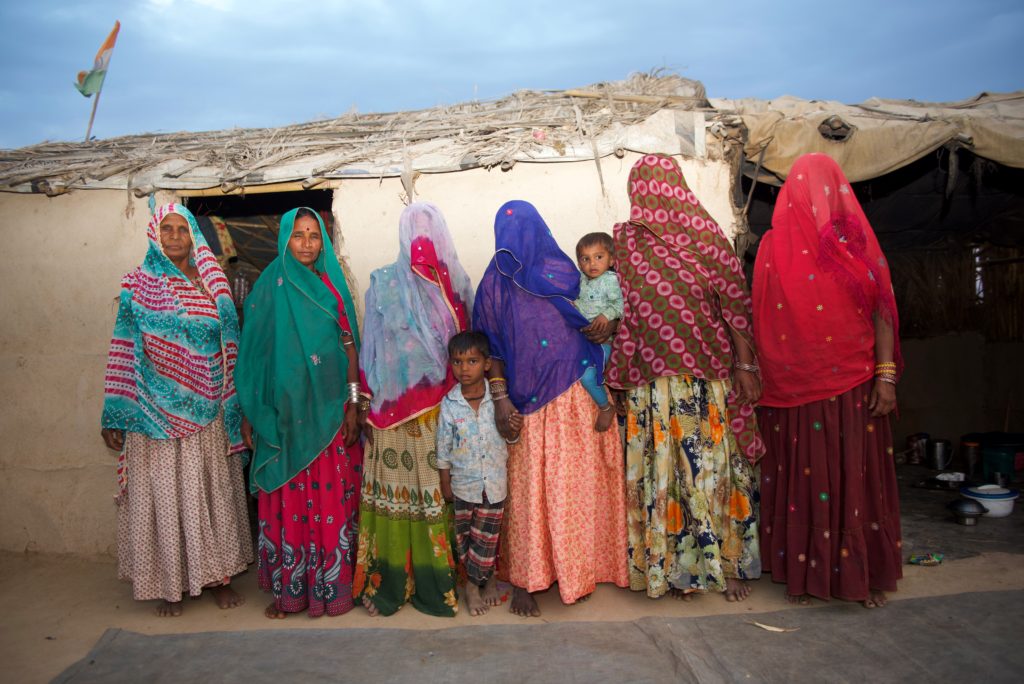
[dropcap]P[/dropcap]rofessor Satya Narayan of Jodhpur tends to agree. “The growing religious radical fundamentalism is so widespread that there seems to be no safe room left for minorities, particularly in Pakistan. Minorities are facing forced conversions and marriages, abductions, land grabbing, rapes, murders, kidnapping for ransom, fake blasphemy cases leading to minority settlements being set on fire and people being burned alive, disgracing dead bodies of Hindus and demolishing, attacking and setting fire to Hindu temples.”
As Narayan points out, the Pak minorities are neither safe as nationals in Pakistan nor have basic rights as migrants in India since the latter was not a signatory to the 1951 Convention relating to the status of refugees.
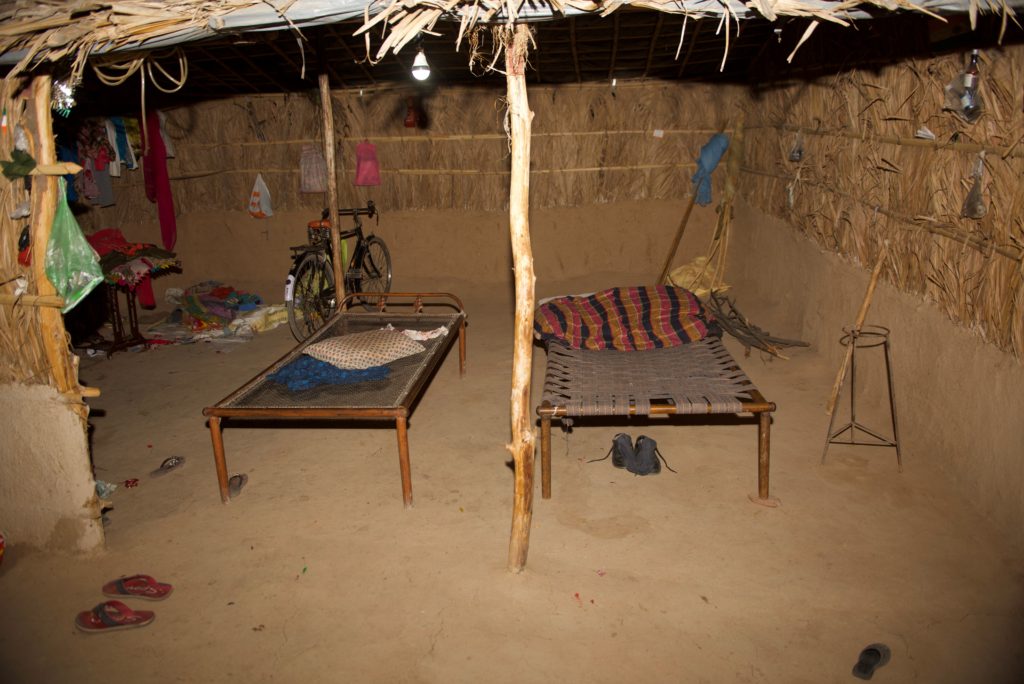
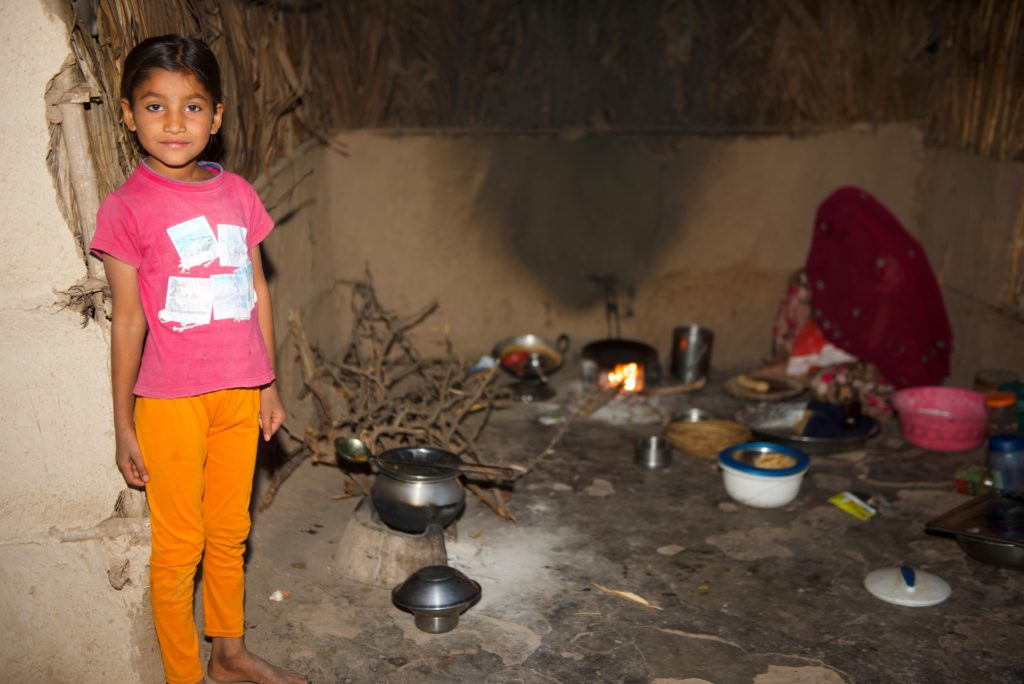
[dropcap]T[/dropcap]he Hindu Sindhi refugees are the forgotten people whom the fast-moving world does not have time for. Yet they have a friend in Hindu Singh Sodha, himself a refugee from Chachro in Tharparkar, Sindh, who migrated to Jodhpur, India just before the 1971 Indo-Pak war. A law graduate from Jodhpur University, he has spent two decades in Jodhpur, greeting many of these first arrivals who had no place to stay or food to eat. From the 90’s he worked as a human rights activist and founded Seeman Lok Sangathan and Universal Just Action Society (SLS/UJAS) to help rehabilitate the Pak minority migrants.
According to Kavita Tekchandani, a lawyer and community activist who works with UJAS from California, there are currently 85,000 Pakistani Hindu refugees who have crossed the border into Rajasthan, India due to the recent instability in Pakistan. Most come from Sindh, Pakistan as well as from Southern Punjab and Balochistan. She says, “Like other religious minorities, they have become ‘soft targets’ for crime, and many have faced issues with discrimination, kidnapping for ransom and kidnapping for forced marriage, forcing a trickle migration.”
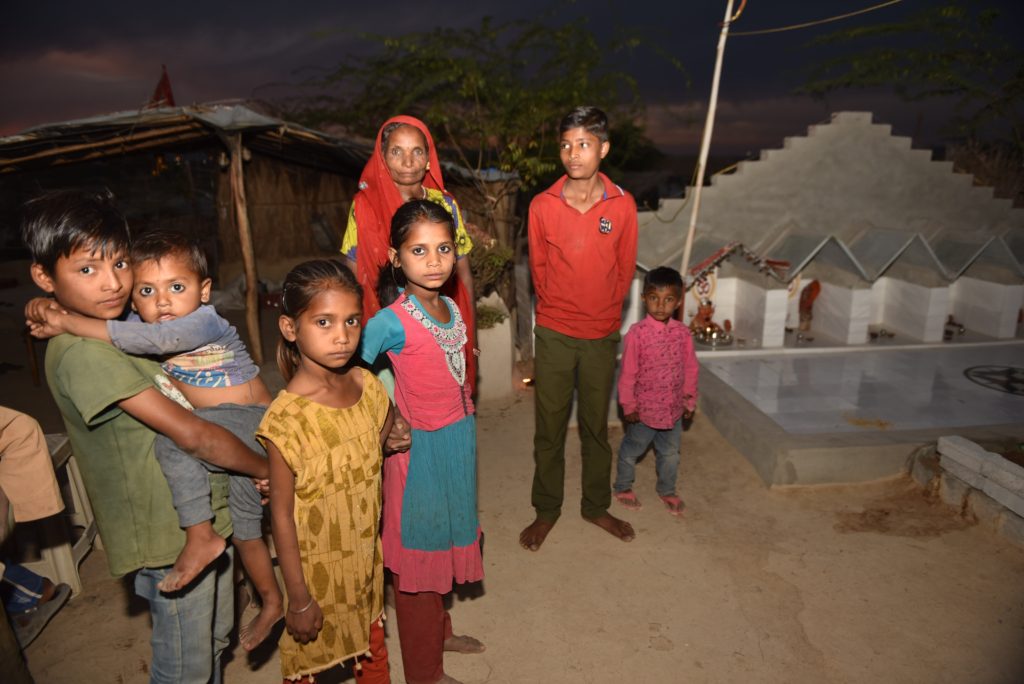
p]I[/dropcap]n his book ‘Fence without Fencing’ which he has co-authored with a recent refugee Ashok Suthar, a social activist, he mentions how 13,000 migrants succeeded in getting Indian nationality through UJAS support. In fact, one media article has referred to the gentle yet determined Sodha as “the god of small people.”
Over the years Sindhi refugees have continued to trek to areas in Rajasthan and Gujarat close to the border and try to start a new life. I visited Jodhpur to get a first-hand report on how these newest and youngest survivors are faring as they walk the tightrope of refugee life between Pakistan and India. My guides there were Hindu Singh Sodha and Ashok Suthar, both refugees themselves.
Now fresh determined Hindu migrants have landed up in Jodhpur in refugee camps and India is the real homeland to which they are returning. Here at least their rights to worship and to make a new life are sacrosanct – though the road may be rough and full of potholes.
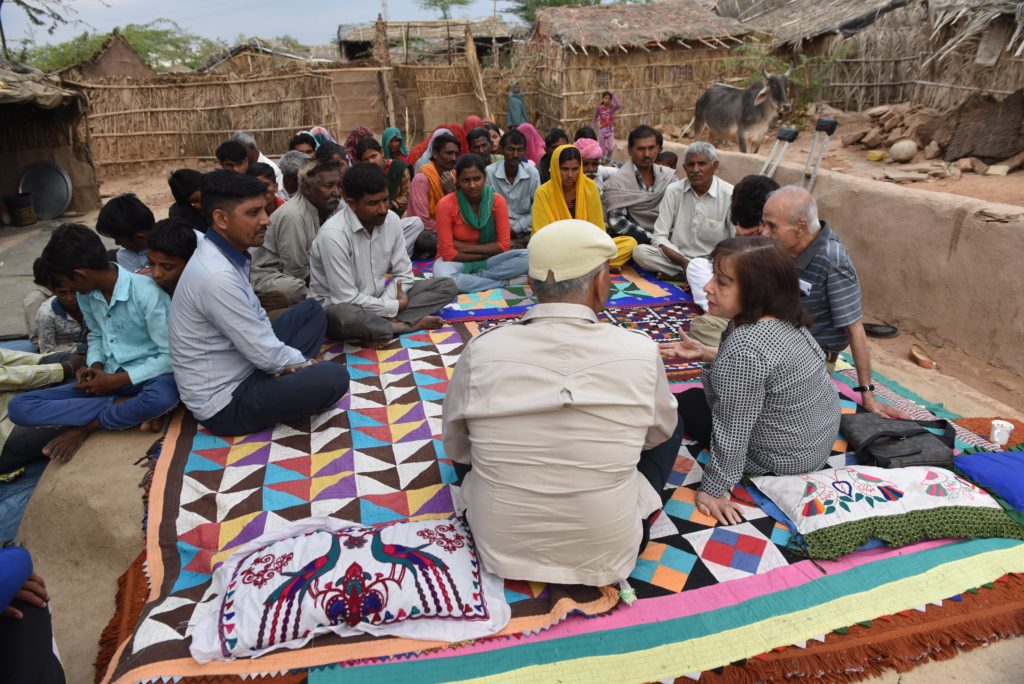
[dropcap]A[/dropcap]ccording to Sodha, most of the migrants coming into Western Rajasthan are Hindus of different castes such as Mehwals, Bhils, Kolhis, odhs, Rajputs, Brahmins, Suthars, Sonars, Prohits, Jats, Nais, Darzis and others. In his book he estimates that the current total population of Pak minority migrants in India, increased through births, of nearly one million is staying mainly in Rajasthan, then Gujarat followed by Madhya Pradesh and some other states. The new migrants go through many difficulties – they have to wait at least seven years before they can be eligible for citizenship and during that period they cannot leave the city where their visa was registered and have difficulties in obtaining homes or driving licenses, among other problems.
It is a story of displacement. “This group is not helped by the government, and none of the national and international human rights organizations have yet shown an interest in taking care of their agonies,” notes Sodha. “They are deprived access to basic rights including the right to justice, the right to self-recognition, the right to work, education and healthcare.”
They come to India for the intangible concepts of religious and economic freedom but settling into camps in the Rajasthan border areas, these refugees have almost no electricity, no clean drinking water, limited food, no shelter and very little resources. Many are being treated for malnutrition in addition to other conditions.
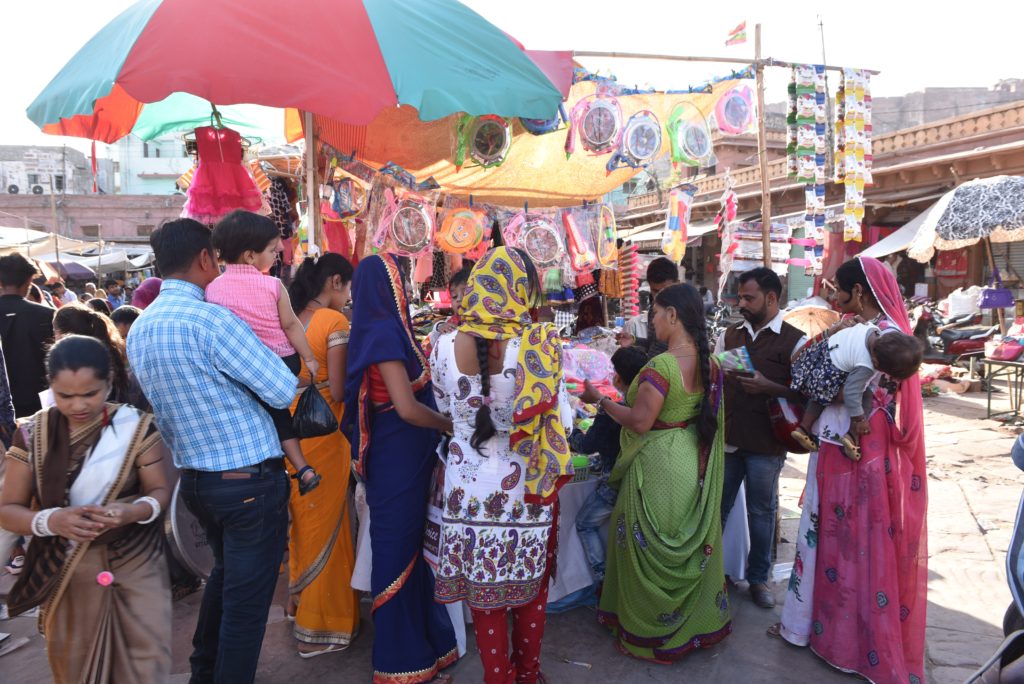
[dropcap]“C[/dropcap]urrently it is estimated that about 250 – 500 people are coming into the Jodhpur, Rajasthan temporary camp grounds every 2 weeks due to the rise of violence across the border,” says Tekchandani. “Without proper work permits and legal status, they are living in a no man’s land, and feel unsafe to return to Pakistan, while also not being able to easily attain their livelihood in India.”
According to UJAS which works with these migrants, these families are poverty stricken, many with the status of scheduled castes and tribes and become more susceptible to discrimination and exploitation when they are further stereotyped as women and children of Pakistani migrants. UJAS is working with local government organizations to help get the rights, visas and citizenships of these migrants addressed.
Jodhpur is a lovely city but you leave it behind as you head to the sheer squalor of the camps.
It was heart-wrenching to visit the dusty wasteland of Anganwadh refugee camp with Singh and Sodha, and meet the refugees face to face. Here the refugees live in mud dwellings with thatched roofs, their cattle and their small community. It is a nowhere land with no stores or medical facilities close by. Some of the refugees have lived there since 5 years – others are as recent as two months. Rough and hot, with rocky, dusty ground and no paved roads, this is home. There are about 300 households in this area with a total population of 1550 people, including about 720 children. Currently a total of four NGOs are working in the community with the government, assisting with schooling, mid-day meals and health camps.
We had an open air panchayat, sitting on spread-out Rajastani dhurries. Hot tea was passed all around as men, women – many with ghunghats covering their faces – and children gathered around us. They discussed their concerns and even the young girls were asked to come forward and tell us about their new lives. They spoke about being enrolled in high school, and one of them happily shared her plans to study medicine. We walked around the area with them and were taken inside some of the humble mud homes furnished with just the basic necessities – string charpoys and their few possessions piled into metal trunks.
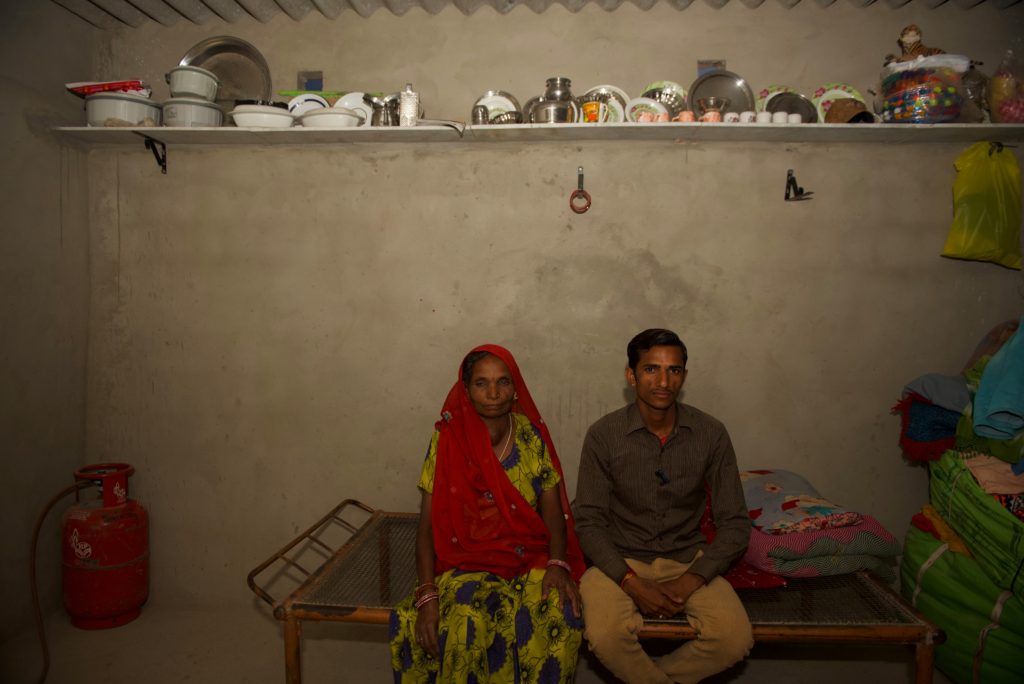
[dropcap]O[/dropcap]ne of the first structures the refugees built in the Anganwad refugee settlement is a temple to their Gods to bless their new endeavors in a new country. They had walked hundreds of miles and faced dangers to win this privilege and now they could worship freely with no restrictions. It is here that they celebrate all Hindu rituals and festivals, without fear of reprisal or abduction.
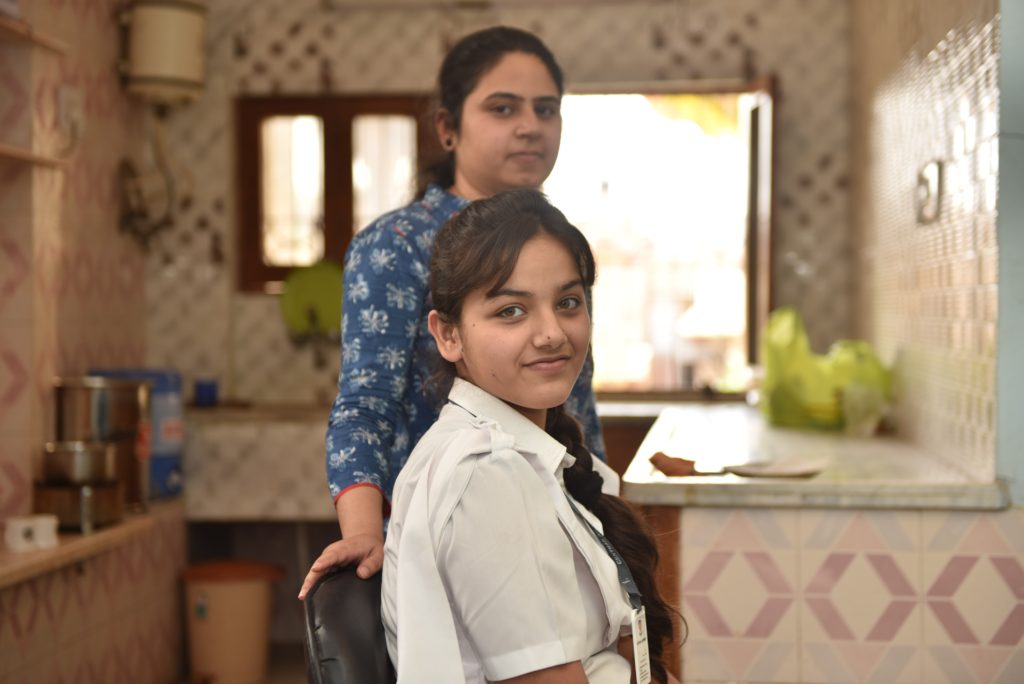
At the UJAS office, which is some distance from the camp, we met the small, dedicated staff and ate a vegetarian meal with them. Ashok Sodha is himself a recent refugee who left Mithi, Sindh to safeguard his young daughters. A graduate in sociology from the University of Sindh, he has authored several books on social development and devoted himself to working with migrants. He mentioned that most of the refugees are tribal families and their children have great needs as many are illiterate or can only communicate in Sindhi.\\
As we spoke, Neha, his lovely young daughter, now in her teens, returned from high school. I looked at her radiantly smiling in her white school uniform, excitedly talking about a career in fashion design, and I knew Sodha had made the right decision to risk the unknown to come to India. Had they stayed on in Pakistan, there is a strong chance she would have had a very different life.
Later we visited another camp in the heart of the city where Sindhi migrants were housed and this did have more conveniences like furniture and cooking equipment. This was a solid brick and mortar building where the migrants weren’t at the mercy of the elements, with proper kitchens and bathrooms. They still looked shell-shocked and grim, and the children didn’t laugh and play in the care-free way children normally do.
Indeed, gradually life does get better for the refugees. We visited a private home in the city where many of the Sindhi migrants had gathered to meet us. They were boisterous and happy as some had just got their citizenship papers after many years. There was hot tea and samosas and garlands for us and a fancy turban presented to Hindu Singh Sodha who is regarded as a savior for the work he does with the migrants.
We were hosted by a refugee who had been here for several years and his home was a three floored comfortable apartment. The three sons had set up several shops in the area and the children, even the little daughters, were playful and confident. They all attended school in the area. It was as good a life as it can get – and there were unexpected bonuses too. I was pleasantly surprised to see that one of the stores which sells fabrics and women’s clothing was run totally by women – the daughters and daughters-in-law of the house! They had their heads covered in decorous Sindhi small-town fashion but they were clearly independent, making a living and being the boss – something which would not have ever happened in Pakistan.
[dropcap]I[/dropcap]n an attempt to help safeguard the refugees, the Hindu faith and the fast-fading Sindhi language, supporters in New York as well as the UJAS and other NGO’s in India are helping these latest refugees establish a community center and school in Jodhpur. As we went to press, I received the first photographs of the launch of the UJAS Asha Kendra being built in collaboration with Children’s Hope India, the New York organization that I am affiliated with. It was satisfying to see the ribbon cutting of the temporary school building as the permanent structure is being built and the teachers have already been hired. Now these children will not have to walk many miles to school and will also learn Hindi, the national language, which will make them a part of their homeland India. They will also learn English and travel by school bus for which the funds are being raised in New York. There are sewing machines for the women and a new skills-training center and also plans to help them market their creations.
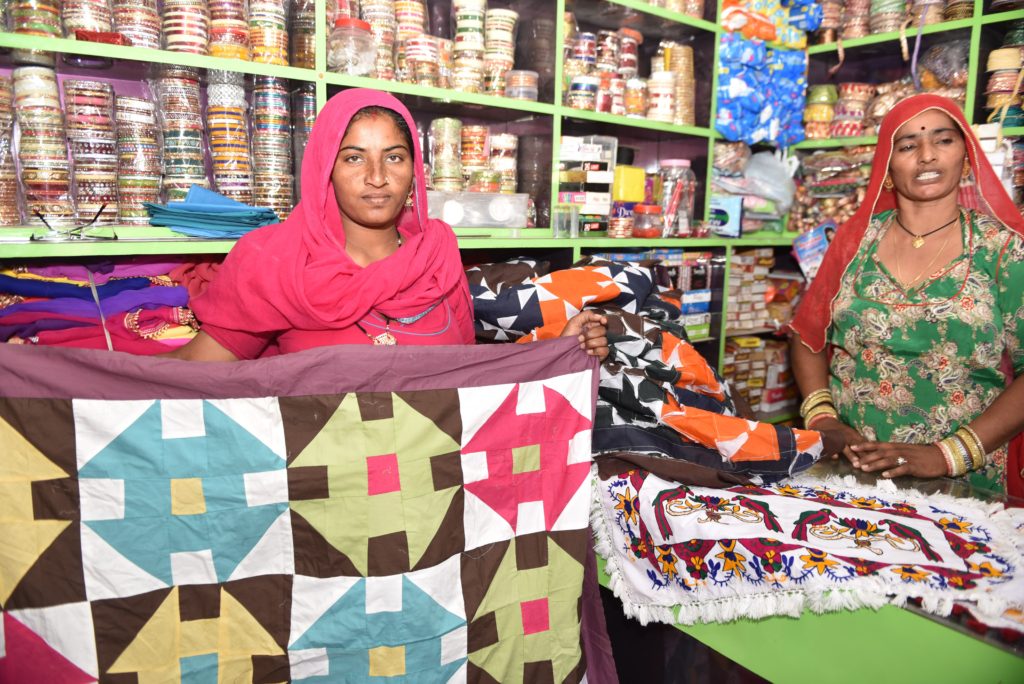
[dropcap]O[/dropcap]n my last day in Jodhpur, I visited the famous Clock Tower open market which is a big tourist attraction and is also a vital market for the locals since it has everything from groceries to clothing at very reasonable prices. Not surprisingly, 80 percent of the businesses are run by former Sindhi refugees who with their perseverance and enterprise have cornered the market.
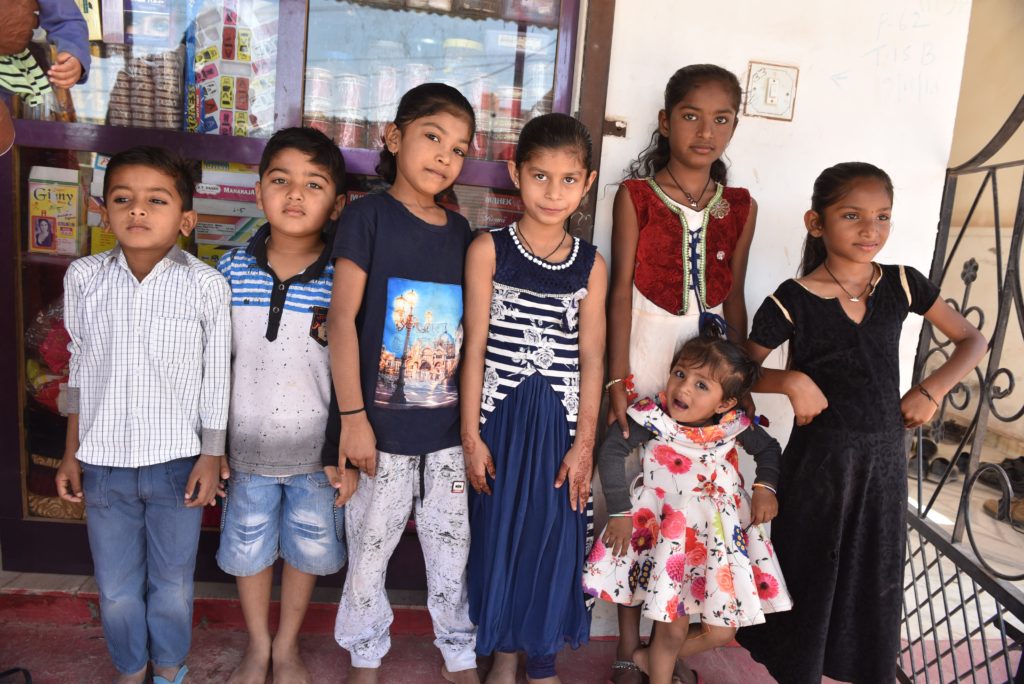
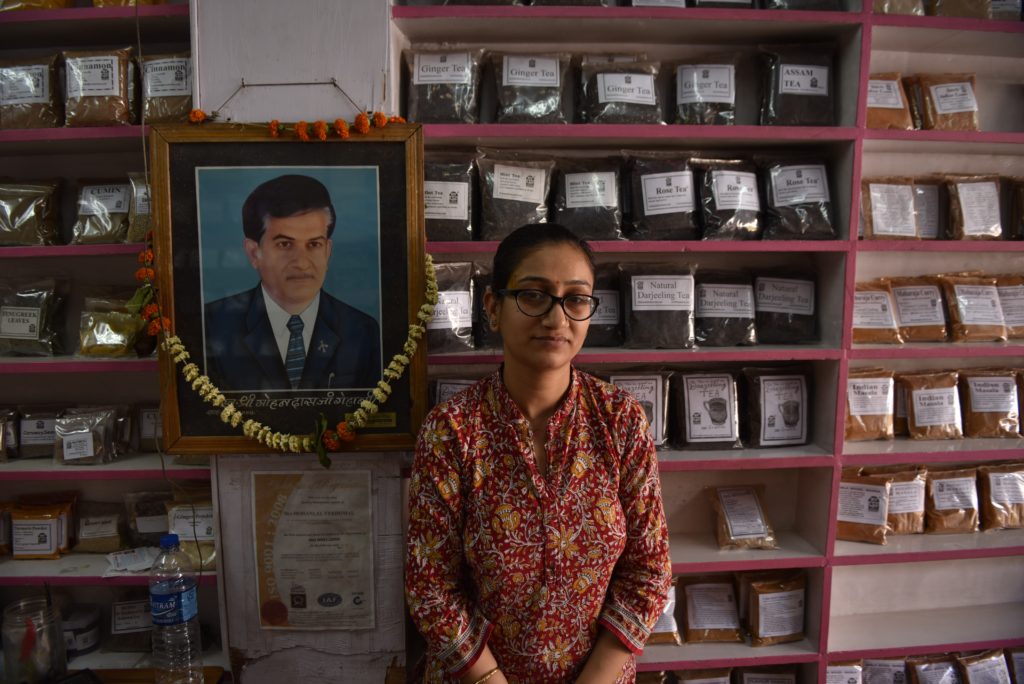
[dropcap]O[/dropcap]ne of the most popular businesses is a spice chain run by seven young sisters, the daughters of a former Sindhi refugee. They are known as the Spice Girls and so successful is their business that tourists flock to their three bustling stores and even the tourist bible Lonely Planet has written about their famous spices. The business of the seven sisters had its origin in the spices their refugee parents used to grind in the camps back in 1947 – the only work they could do in the desolateness of the refugee camps. Like most Hindu refugees, they took a difficult time in their lives and turned it into the foundation of their future.
(This article was first published in Hinduism Today Magazine in Hawaii)

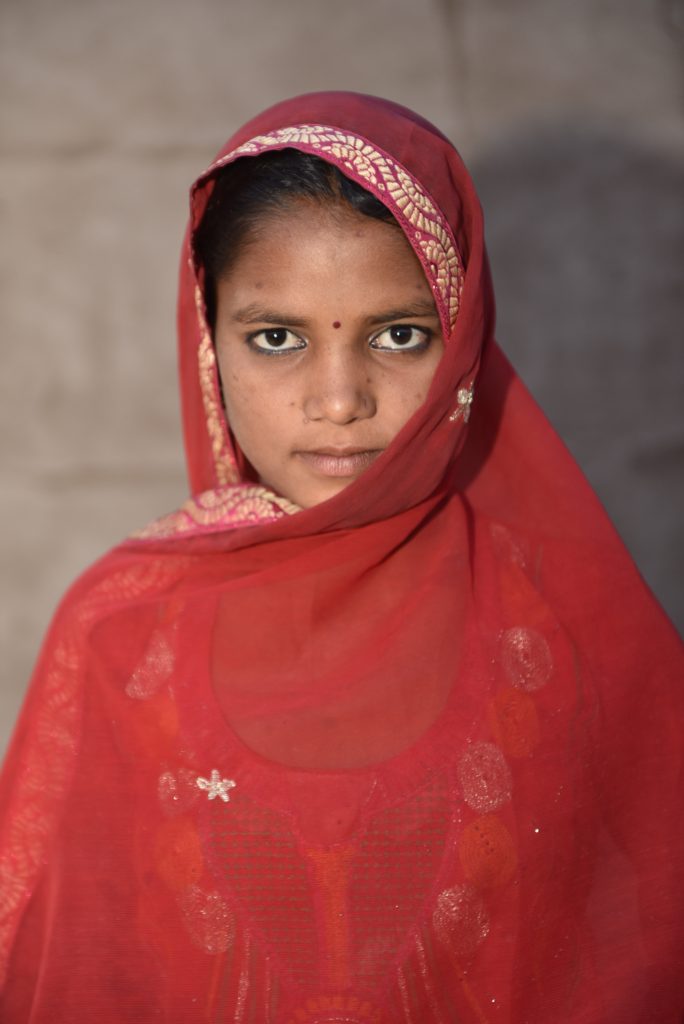
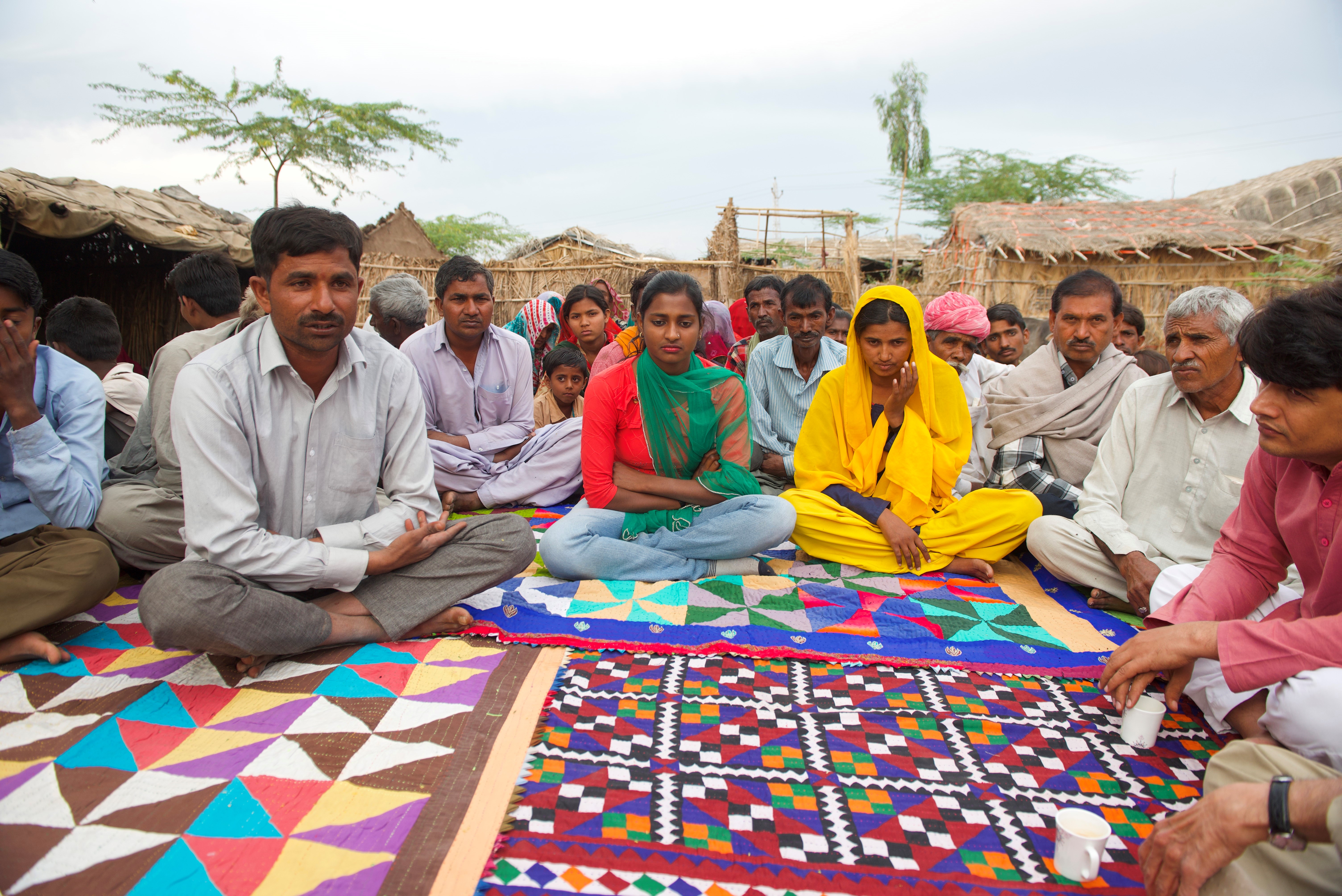
1 Comment
Pingback: For the New Year, a Sindhi Celebration